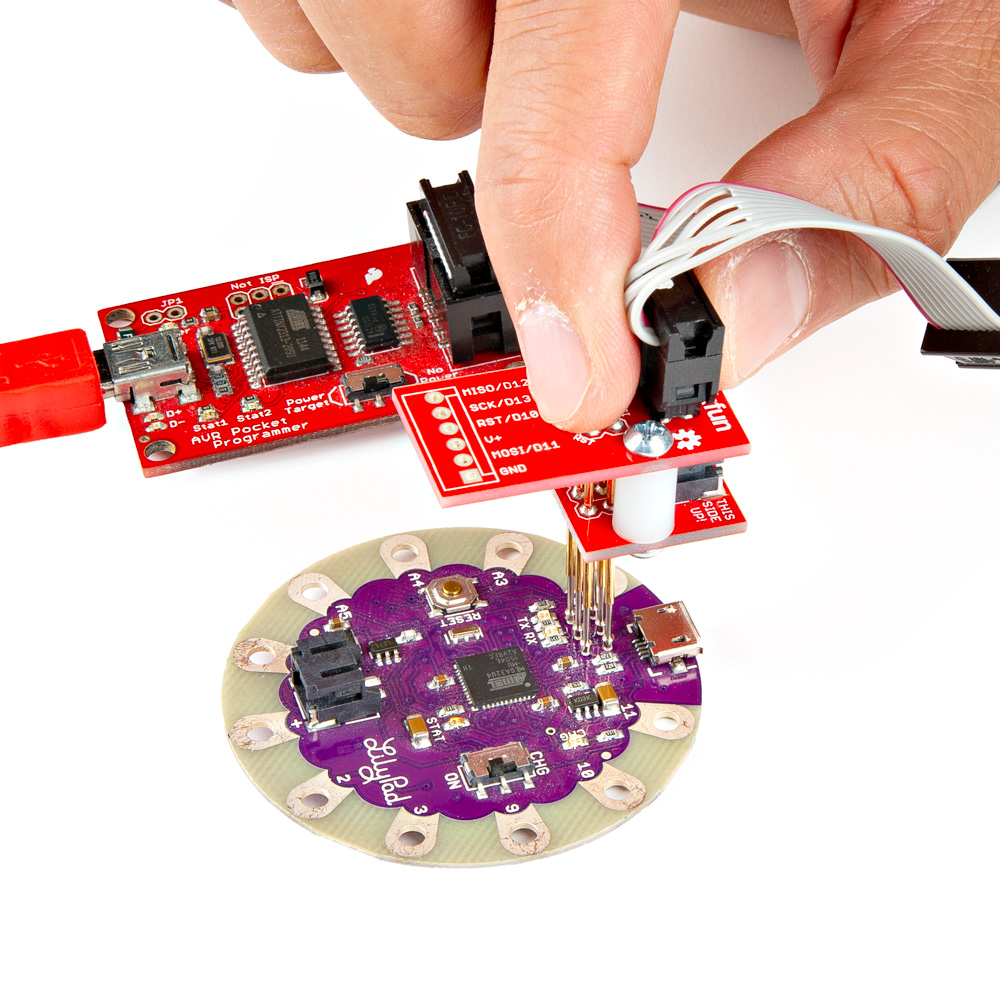SparkFun ISP Pogo Adapter v2
Pogo pins make life so much easier when you are trying to program without having to solder a single thing, and when you attach them to an In-system programming (ISP) adapter, they become instantly better. This simple kit allows you to do just that. The ISP Pogo Adapter is a simple and easy way to adapt pogo pins to a 6-pin ISP header, allowing you to program an IC without soldering a header.
We've also included a labeled SIP header row and 10 6in. M/M jumper wires allowing you to use your Arduino (or other single-board microcontroller) as an ISP device!
This adapter comes as a kit, and assembly will be required.
- 1x ISP Pogo Adapter PCB
- 1x 6in. M/M Jumper Wires (pack of 10)
- 1x 6in. M/F Jumper Wires (pack of 10)
- 1x JST Right Angle Connector
- 1x Male ISP 2x3 Header
- 2x 3/8" Plastic Standoff
- 4x 1/4" Phillips Head Screw
- 6x Pogo Pin with Pointed Tip
Revision Change: With this revised version the Molex 6-pin cable was switched out for M/M jumper wires.
SparkFun ISP Pogo Adapter v2 Product Help and Resources
Tiny AVR Programmer Hookup Guide
October 28, 2013
A how-to on the Tiny AVR Programmer. How to install drivers, hook it up, and program your favorite Tiny AVRs using AVRDUDE!
Pocket AVR Programmer Hookup Guide
July 7, 2014
Skip the bootloader and load your program directly onto an AVR with the AVR Pocket Programmer.
Installing an Arduino Bootloader
December 4, 2013
This tutorial will teach you what a bootloader is and why you would need to install or reinstall it. We will also go over the process of burning a bootloader by flashing a hex file to an Arduino microcontroller.
Core Skill: Soldering
This skill defines how difficult the soldering is on a particular product. It might be a couple simple solder joints, or require special reflow tools.
Skill Level: Rookie - The number of pins increases, and you will have to determine polarity of components and some of the components might be a bit trickier or close together. You might need solder wick or flux.
See all skill levels
Core Skill: DIY
Whether it's for assembling a kit, hacking an enclosure, or creating your own parts; the DIY skill is all about knowing how to use tools and the techniques associated with them.
Skill Level: Noob - Basic assembly is required. You may need to provide your own basic tools like a screwdriver, hammer or scissors. Power tools or custom parts are not required. Instructions will be included and easy to follow. Sewing may be required, but only with included patterns.
See all skill levels
Core Skill: Electrical Prototyping
If it requires power, you need to know how much, what all the pins do, and how to hook it up. You may need to reference datasheets, schematics, and know the ins and outs of electronics.
Skill Level: Rookie - You may be required to know a bit more about the component, such as orientation, or how to hook it up, in addition to power requirements. You will need to understand polarized components.
See all skill levels
Comments
Looking for answers to technical questions?
We welcome your comments and suggestions below. However, if you are looking for solutions to technical questions please see our Technical Assistance page.
Customer Reviews
No reviews yet.







